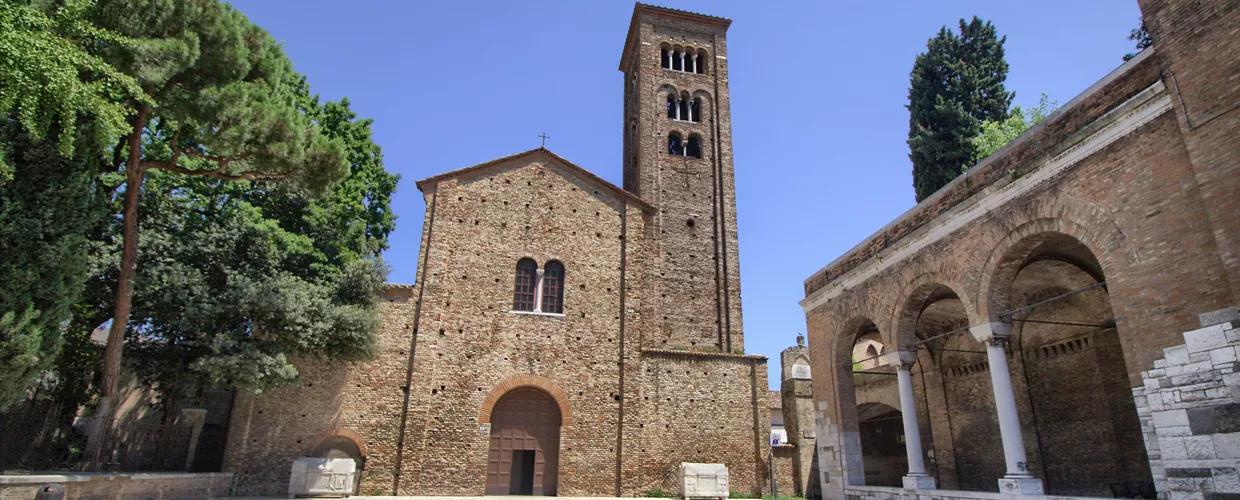This content was automatically translated. View the original text.


Overview
The origins of the basilica date back to the fifth century, when the church was dedicated to St Peter and Ravenna was a capital city - first of the Western Roman Empire, then of the Romano-Barbaric kingdoms of Odoacer and Theodoric - but since then the building has undergone several radical changes. The Franciscans arrived here eight centuries later, in the same few years that Dante was born in Florence. The Poet in exile took the community of friars so much to heart that one of the cloisters of the monastery is now commonly referred to as 'Dante's cloister' and Dante's tomb practically stands outside it
The church itself had been rebuilt in the 10th century, remodelled in the late 18th century, over-restored in 1921, bombed in 1944, and rebuilt accordingly. The so-called urn of Liberius at the high altar, with its reliefs probably even older than the original church, and the crypt underneath, although itself restored, with its 10th-century columns and mosaics, have survived; you can look at it through a window because, within living memory, it is flooded.